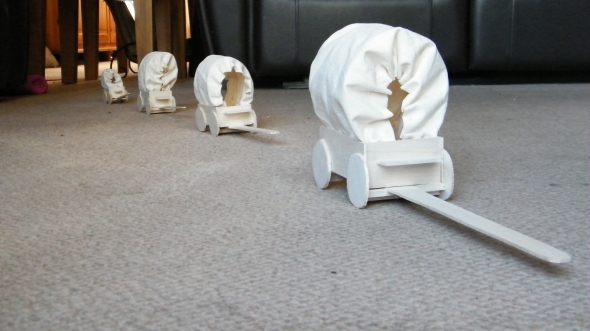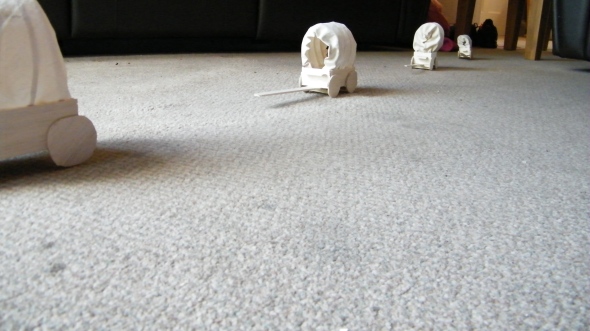Joseph Crima in Conversation with Thomas Demand 12/4/12 Nottingham Contemporary
This happened what feels like a month ago, but it was only during the Easter Holidays. So what follows is my write up for my research and work; my responses and notes of the conversation.

Demands work in this exhibition is seen as a real departure for him, but not so really as he is still photographing models, these are models that serve a purpose.
Demand replies that he was working as a scholar at the Getty institute in the USA, where he came across the models of John Lautner, that were falling to bits or just damaged.
We are told that the models which were made would usually be destroyed, or the client took them, however they are not really for the client, more for the architects use to understand the space. He thought they were peculiar. Acknowledging that architectural models are built in a computer. The models are used to understand the design, the space, and allow him (Lautner) to change things. Demand feels that modelling reducing the world into a state to understand it, to gain different ideas. On another level they are just an object and part of the architectural process. Some of these models were never built.

When he was initially photographing the models, he couldn’t use lights or a tripod, the models had not been cared for, not even listed, starting to decay, but were still very attractive.

They are seen as a tool for infinite testing, we are told that Lautner’s architecture was used in films; this was not his fault, which is frowned upon in the architecture community. The models don’t photograph well, its only when you see the models; the camera can show more angles. Demand tells us that there is empathy for Lautner in the art world, having an overall rationale idea, which is similar to artists with material. This is found in the photographs of Julius Shulman, who photographed Lautner’s buildings with a crisp finish.
Demand talks about how Lautner had a rule that was to not doing the same, he couldn’t break that rule. Demand needed to explore this idea to understand it. He tells us that as an art student he was told he had to be different, to be apart of the new generation. He decided to go the other way, staying with what he knew. In Lautner constantly breaking his rule, he had a rule. Demand made scale models at art school, and still does that now, working with paper and photographs.

Crima asks about the abstract nature of the photographs in the exhibition, was Demand thinking about this, its not so indexical. Demand explains that he had to bend and borrow in order to create his photographs, knowing that he was borrowing from abstract painting. The models had a clear referential; of representation, also they weren’t his. He knew they had to be close-up, stopping what they become. The representation gives the viewer something to hold onto.
Demand went every Tuesday for a year to see one model, he needed to work digitally, to know if the images would work or not.
Crima then talks about the photographs being taken under dangerous circumstances of when working with his paper models. Thinking about their complexity, having them so controlled, having a certain window of time for the image to happen, observation with organisation.
Demand replies its not as complex for him, compared to something like rocket science, he jokes, but I can understand, after having years of experience and knowledge of the material that he has, its not really complex at all. Its part of his practice.
He goes onto explain why he never shows the objects that are make, he doesn’t want us to see the making of the model. They are seen as unrealistic, which is much easier, he doesn’t want us to see the process.
We are told that the models that Demand makes are all the prototypes, having a staff who make them full sizes.
The artist explains that he likes that he makes them, he has to understand them, about what they can say, if he doesn’t love it, who will? He sees a personal attachment in the work. The artwork is about what it is, what it means, on its own its really nothing. The painting of the old masters are amazing objects, questioning why they aren’t mass-produced, answering that they should be rare.
He goes onto talk about film and set design, saying that that they take the real and make it fantastical, the believable and unbelievable. Demand tries not to use heavy instruments. I think that is the right way to go when working with paper, as it’s a simple material, so why over complicate that with techniques that may lower the quality of the work.
We are told that he has been working on a 100 second film, now he understands more about films, seeing that it is becoming a family business.
Crima moves the conversation to talk about his curating in Monaco, at the Nouveau Musée National de Monaco, the show was titled “La Carte d’après Nature”, a group exhibition with work that centered around Rene Magritte and Luigi Ghirri, taking object that make thought, seeing art objects proposed as communication.
He sees the camera as a device to look at the work. I winder if it also its also about hiding the work, being shown what the artist wants us to see. Our view is controlled by the camera. That’s where our work differs, he controls our view, as I later found out asking him a question, which will be at the end. My work has to be fully explored to understand it, where as Demands is about what you see in the image is what you get in the photograph, what you see is what you get visually. The imagination can do the rest, and that’s where we meet up again, giving so much information visually in a real-life sense, but not all the visuals as the imagination is important to us, to see beyond what is in front of us.
Going to back to the show in Monaco that he curated, he organised the space in such a way to be original. He was aware, being the first show if the gallery, they had no set rules, so he was free from any past constraints that maybe lay before him.
Turning to the questions that I rarely if ever record, coming to the conclusion that I will only ask question of artist who really interest me, unlike in transmission, when I was only really wanting to do so twice over the three years of the series.
A question about the lack of detail in his work leads him to talk about the differences between the protestant cross and the catholic cross. The catholic cross carries the son of god, who sacrificed himself, whilst the protestant does not, believing that you don’t need to see to know what it is to understand it’s the crucifix. He adds that art in the last 20 years has been looking at things, how we look at things. Wanting to give enough to recognise, just enough, not to be user friendly, using their own representation, opening up thoughts. In his photography he uses flat lights as much as possible, creating a neutral feel, so you see what’s in front of the camera only. Adding that each work has its own condition.
Asked about the abundance of images in our western culture and how he is adding to that. He feels that he doesn’t compete, working with just representation, it is what it it, what it is, what it is.
I then asked about the how he uses the camera to show what we look at, adding what about what is left hidden or unseen, and the choices that go into that. He replies saying that it’s just a cardboard model; it shouldn’t really be there. Working with clichés and representation, that is what is of interest to him. Finishing that a picture is a picture, is a picture. I can see where he’s coming from, using the model as a means to an ends to create the picture. The model allows him to use the camera to take his representation. The model is the beginning of the work, the camera brings it together before its blown up.
Another question talks about the models presence, and the tension within the work shown, asking if the only possibility is to destroy the model. Demand says that it is the only possibility. Talking about the detail placed on models from Star Wars, he’s notinterested in the model itself, but the effect that it creates.
A question about how he constructs the prototype model by hand himself and not on the computer, telling us that he is aware that the computer can do loads. The programmes are based on the same rules of geometry creating the models. For now the computer is limited. He’s not willing to accept that in his work. Preferring the 3Diemensional world around him instead.
Demands practice and ideas do share some similarities with mine. However he has a staff, which I can see as being lazy, but he makes the first model, for them to work to, so it will in a sense be his work still. I’m still not all the comfortable with employing staff to do the art. Assistants to help me personally, as in the degree show, that’s different, or is it?
The use of materials, there is no question; my work is becoming more vacant and minimal, learning that less is more for the viewers to imagine themselves. To illustrate is just a one trick pony really and that’s ok, if you don’t want to communicate, but merely replicate.
The idea of the camera being the sole way of representing the work doesn’t fit for me. He too is aware of illusions, but he hides that behind the photographic, representing a 3D image in 2dimensions. I feel I spend too much time with the model to throw it away. Plus I’m not ready to throw it away for the photograph to be in it’s place, unless it was made for a photograph originally.
Fuelling the Habit

I found this in the Metro on the bus home. Davy Mulrine reuses beer cans to construct his models. They amaze his American friends. The cans have also contributed to the house decorations. A simple connection to planes being made at full scale from cans, to the miniature here in front of him.
Gibson & Martelli – VISITOR (2011)


I went to see this at the Towner at the weekend and was very surprised and lost in this piece by Gibson and Martelli in their igloo exhibition.. It’s a shame the show has now finished. I hope its on elsewhere in the country soon.



















